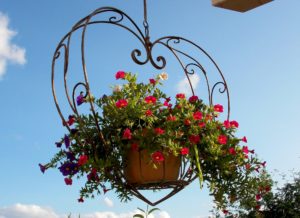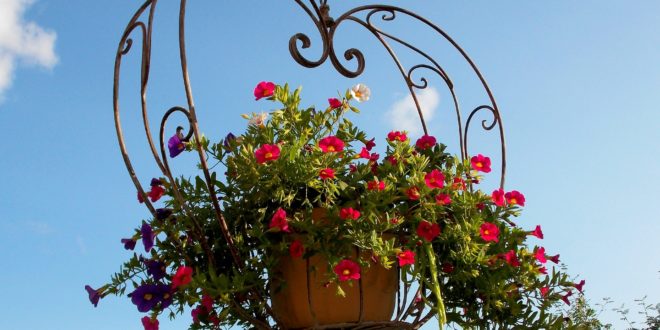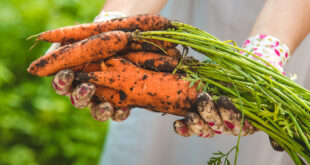There’s little else as eye-catching as a hanging floral basket yet, as anyone who’s tried to ‘build’ their own knows, these gorgeous garden displays are not only costly and time-consuming to create, they’re also downright difficult to perfect – and they often use unsustainable ingredients. But don’t put them on your ‘impossible’ list quite yet, because with a few simple tips, you really can get the stunning professional look you’re after.

Basket liners
One of the most unsustainable (and costly) ingredients in a DIY hanging basket is the liner. Pressed sphagnum moss liners are favoured for their moisture-retaining properties but it’s common knowledge that sphagnum moss is frequently harvested from unsustainable sources. Cheaper, and more environmentally-friendly choir liners (made from coconut husks), won’t hold water as well as their pressed-sphagnum cousins, and both types of liner won’t last more than a season. Better by far is to cut your own liners from furniture removal blankets. These thick, tough, covers in a neutral grey, consist of felted recycled material, and can be cut to fit any basket. The fabric won’t fray when you make planter holes in it, and the DIY liner can be used year after year.
Perennial greenery
The UK is famous for its hanging floral baskets which adorn most high streets. But many UK basket-growers don’t start from scratch. The greenery they employ (such as prostrate rosemary and mint) is perennial, and the colourful components in the baskets (the annual flowers) are popped in around it each season. Fast-growing ivy is a basket-grower’s perennial greenery of choice. It grows easily from pieces, stands up to strong winds, and tolerates both wet and dry conditions. At the end of summer, remove the spent annuals, top up the potting mix around the ivy, and revitalise the soil with fertilizer pellets. Next season, plant your annuals into the already established setting.
Water retaining crystals
Hanging baskets are quick to dry out, especially in the moisture-sapping winds that these high fliers frequently have to contend with. To lock in moisture, mix water-retaining crystals into the potting mix but bear in mind that you can choose where in the planter you position them. Mix the crystals into the potting mix in the lower half of the basket, pierce holes into the liner near the base of the container, and plant your moisture-lovers (such as fuchsia, sweet peas, frothy parsley, and ferns) at this level. Keep the upper half of the basket for plants (such as portulaca, livingstone daisy and nasturtium) which prefer drier conditions.
Feed me!
Hanging baskets are high performers yet there’s not a lot of space for root growth. If you’re not careful, nutrients are soon depleted and the basket is looking worse for wear when summer is only half way through. The secret to keeping your basket plants well fed is to choose a long-lasting fertilizer pellet. Ask at your garden centre for the best pellets for the job – don’t just choose your regular planter fertilizer.
Hold your horses!
Hanging baskets don’t happen overnight. Prepare yours at least 8 weeks in advance (longer if you are establishing greenery), and pinch out the tips of annuals to encourage bushing. Keep the basket in a warm, sheltered place until the plants are well established, then introduce it to the big wide world gradually to harden off the display before finally hanging it.










Join the Discussion
Type out your comment here:
You must be logged in to post a comment.